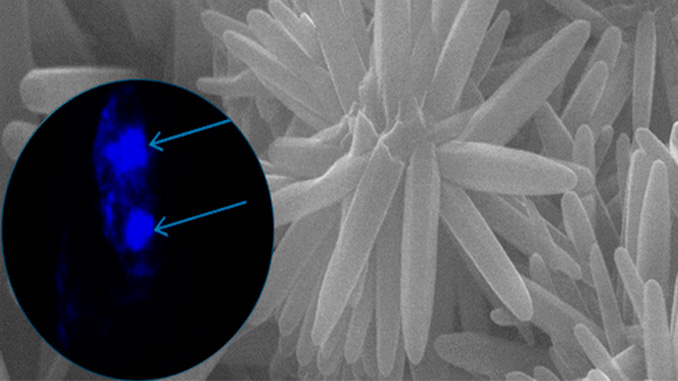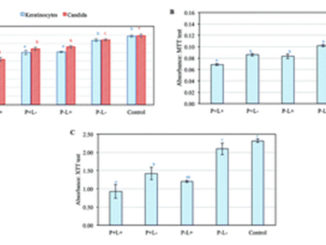
Writers: Iêda M. M. Paino, Fernanda J. Gonçalves, Flavio L. Souza, and Valtencir Zucolotto
Keywords: fibroblast L929 cell; human cervical cancer cell; nanotoxicology; reactive oxygen species; zinc oxide nanoparticles;
Abstract: Nanostructured zinc oxide (ZnO) materials have been intensively studied because of their potential applications in cancer therapies. However, a better comprehension of the toxicity of the flower-like ZnO nanostructures toward cancer cells is still needed. In this study, we investigate the cytotoxicity of a ZnO flower-like nanostructure produced at low temperature via aqueous solution in human cervical carcinoma (HeLa) cells and noncancerous cell-line murine fibroblast (L929) cells. Nanotoxicology effects were analyzed to study apoptosis and necrosis processes, reactive oxygen species production, and cellular uptake. Cells remained incubated for 24 h in concentrations of 0.1, 1.0, and 10.0 μg mL–1 ZnO nanoparticles (NPs), with the estimated rods length varying from 1.7 ± 0.4 to 2.3 ± 0.4 μm, synthesized at different times (4, 2, and 0.5 h) by an aqueous solution method. The cytotoxic response observed in noncancerous and cancer cells showed that all of the ZnO NPs synthesized by an aqueous solution exhibited enhanced toxicology effects in cancer cells. ZnO flower-nanostructures exhibited a higher cytotoxic against cancer HeLa cells, in comparison to the noncancerous cell line L929. The cytotoxic response of ZnO NPs at 0.5, 2, and 4 h in L929 cells was not statistically significant. This ability may be of clinical interest because of the effectiveness of ZnO NPs to distinguish between normal and cancer cells in cancer therapy.




